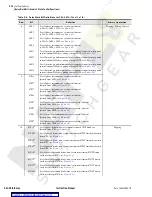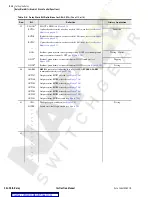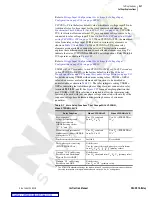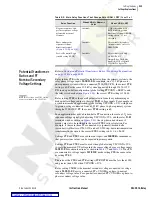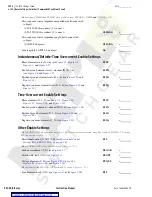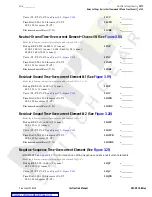
9.34
SEL-351A Relay
Instruction Manual
Date Code 20080213
Setting the Relay
Settings Explanations
Settings Explanations
Note that most of the settings in the settings sheets that follow include
references for additional information. The following explanations are for
settings that do not have reference information anywhere else in the
instruction manual.
Identifier Labels
Identifier Labels (See Settings Explanations on page 9.34) on
The SEL-351A has two identifier labels: the Relay Identifier (RID) and the
Terminal Identifier (TID). The Relay Identifier is typically used to identify the
relay or the type of protection scheme. Typical Terminal Identifiers include an
abbreviation of the substation name and line terminal.
The relay tags each report (event report, meter report, etc.) with the Relay
Identifier and Terminal Identifier. This allows you to distinguish the report as
one generated for a specific breaker and substation.
RID and TID settings may include the following characters:
➤
0–9
➤
A–Z
➤
-
➤
/
➤
.
➤
space
These two settings cannot be made via the front-panel interface.
Current Transformer
Ratios
Refer to
Current and Potential Transformer Ratios (See Settings Explanations
Phase and neutral current transformer ratios are set independently. If neutral
channel
IN
is connected residually with
IA
,
IB
, and
IC
, then set CTR and CTRN
the same. Relay settings CTR and CTRN are used in relay event reports and
metering functions to scale secondary current quantities into primary values.
For directional control on low-impedance grounded, Petersen Coil grounded,
and ungrounded/ high-impedance grounded systems, neutral channel
IN
is
usually connected to a core-balance current transformer that encompasses the
three phases (see
). This type of current transformer
typically has a lower ratio than the phase current transformers, which allows
for more sensitivity in ground fault detection. Core-balance current
transformers are also used for nondirectional sensitive earth fault (SEF)
protection (see
).
CT Sizing
Sizing a CT to avoid saturation for the maximum asymmetrical fault is ideal,
but not always possible. This requires a CT ANSI voltage classification
greater than (1 + X/R) times the burden voltage for the maximum symmetrical
fault current, where X/R is the reactance-to-resistance ratio of the primary
system.
Summary of Contents for SEL-351A
Page 10: ...This page intentionally left blank Courtesy of NationalSwitchgear com ...
Page 16: ...This page intentionally left blank Courtesy of NationalSwitchgear com ...
Page 34: ...This page intentionally left blank Courtesy of NationalSwitchgear com ...
Page 126: ...This page intentionally left blank Courtesy of NationalSwitchgear com ...
Page 184: ...This page intentionally left blank Courtesy of NationalSwitchgear com ...
Page 198: ...This page intentionally left blank Courtesy of NationalSwitchgear com ...
Page 228: ...This page intentionally left blank Courtesy of NationalSwitchgear com ...
Page 278: ...This page intentionally left blank Courtesy of NationalSwitchgear com ...
Page 384: ...This page intentionally left blank Courtesy of NationalSwitchgear com ...
Page 410: ...This page intentionally left blank Courtesy of NationalSwitchgear com ...
Page 450: ...This page intentionally left blank Courtesy of NationalSwitchgear com ...
Page 454: ...This page intentionally left blank Courtesy of NationalSwitchgear com ...
Page 472: ...This page intentionally left blank Courtesy of NationalSwitchgear com ...
Page 504: ...This page intentionally left blank Courtesy of NationalSwitchgear com ...
Page 558: ...This page intentionally left blank Courtesy of NationalSwitchgear com ...
Page 562: ...This page intentionally left blank Courtesy of NationalSwitchgear com ...
Page 586: ...This page intentionally left blank Courtesy of NationalSwitchgear com ...
Page 608: ...This page intentionally left blank Courtesy of NationalSwitchgear com ...
Page 666: ...This page intentionally left blank Courtesy of NationalSwitchgear com ...

